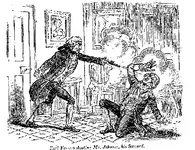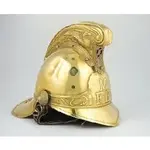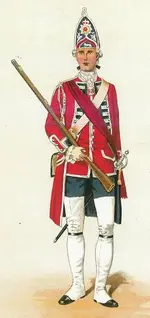Correction: Should read:
"20th Century" not "19th Century" ghost story
View attachment 1089806
Early 1900's Fireman Hat
“In the late 1930's a family named Adams were living on Oak Island where they worked as caretakers. They had a four-year-old daughter named Peggy who had never been to school or had never even been exposed to books.
One day during the winter, she had been playing outside and returned excitedly to tell her mother that she had seen many men wearing red coats and hats looking like firemen's hats. Peggy and her mother retraced her steps and reached a location between the Money Pit and Smith's Cove but there were no footprints in the snow, as though no one had been there.
Many years later when Mrs Adams visited the Citadel at Halifax to see the museum, they saw effigies of British soldiers dressed in uniforms dating from 1754-1783, matching those identified by Peggy who was quick to recognise the costume.”
View attachment 1089807
Canadian 1760 ad Grenadier
Soldiers' hats were of a particular style and were limited in fashion to a relative short period of time.
From the Cocker or Tricorne hat (Triangular hat) a noted (Pirate’s hat) to the Bicorne worn straight, to the Bicorne worn in the Napoleon style, there was only one that resembled a “Firemen’s Hat”.
I would believe that Peggy Adams thought this to be the Mitre cap or Grenadier cap worn by the Canadian and British Grenadiers.
The Grenadier cap began in 1700 and continued until 1768 when it was replaced with the Grenadiers Bearskin cap.
It was also a fact that the Canadian Grenadier foot brigade were stationed in Halifax and in 1762 went to the Battle of Havana under Lieutenant-General William Keppel.
It was also curious that they did not return directly back to Halifax Nova Scotia after capturing Fort Morro, but claimed to have spent several months at Cuba.
“15th (York, East Riding) Regiment of Foot
Formed in 1685 and designated as the 15th in 1751.The regiment arrived in Halifax on April 15th, 1758 and took part in the siege and capture of Louisburg that June at a strength of 859 . From Louisburg it went to Quebec with Wolfe, It fought in the great battle on the heights of Abraham, and after Wolfe's fall served at the defence of Quebec, and with the force sent against Montreal under General Murray, which completed the conquest of the Canada's. Next, it was at the capture of Martinique, and it the siege and conquest of the Havana in 1762, and was quartered for eleven months in Cuba, thence proceeding to New York, and afterwards back to Canada, where it served many years.”









